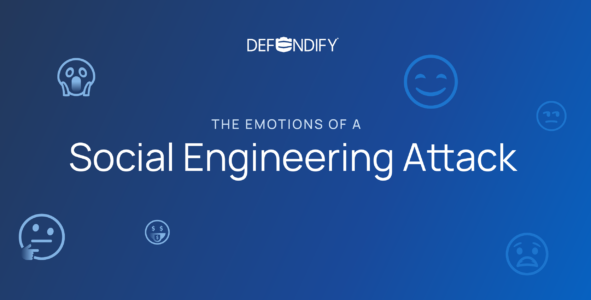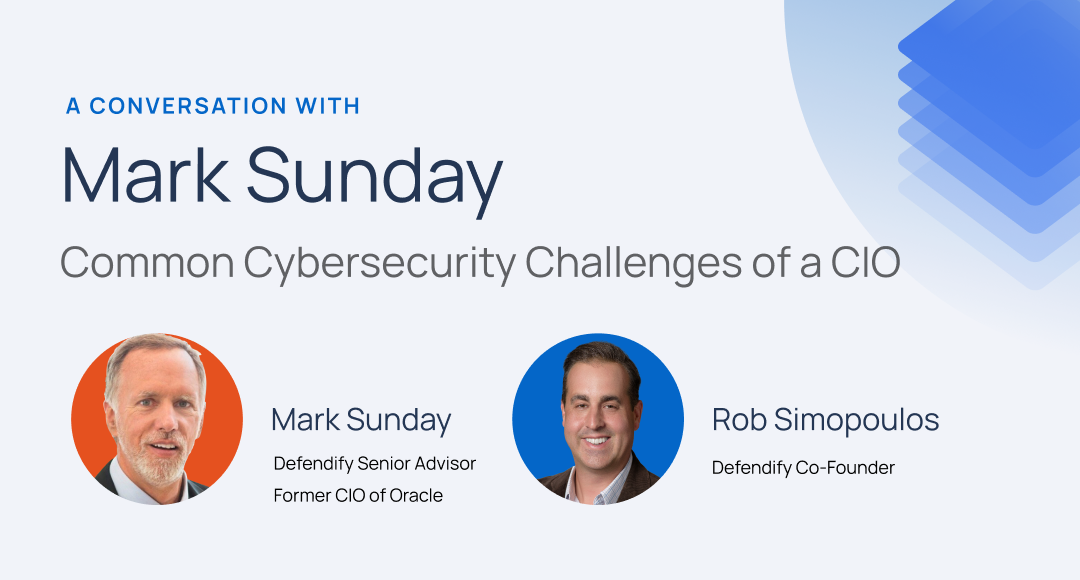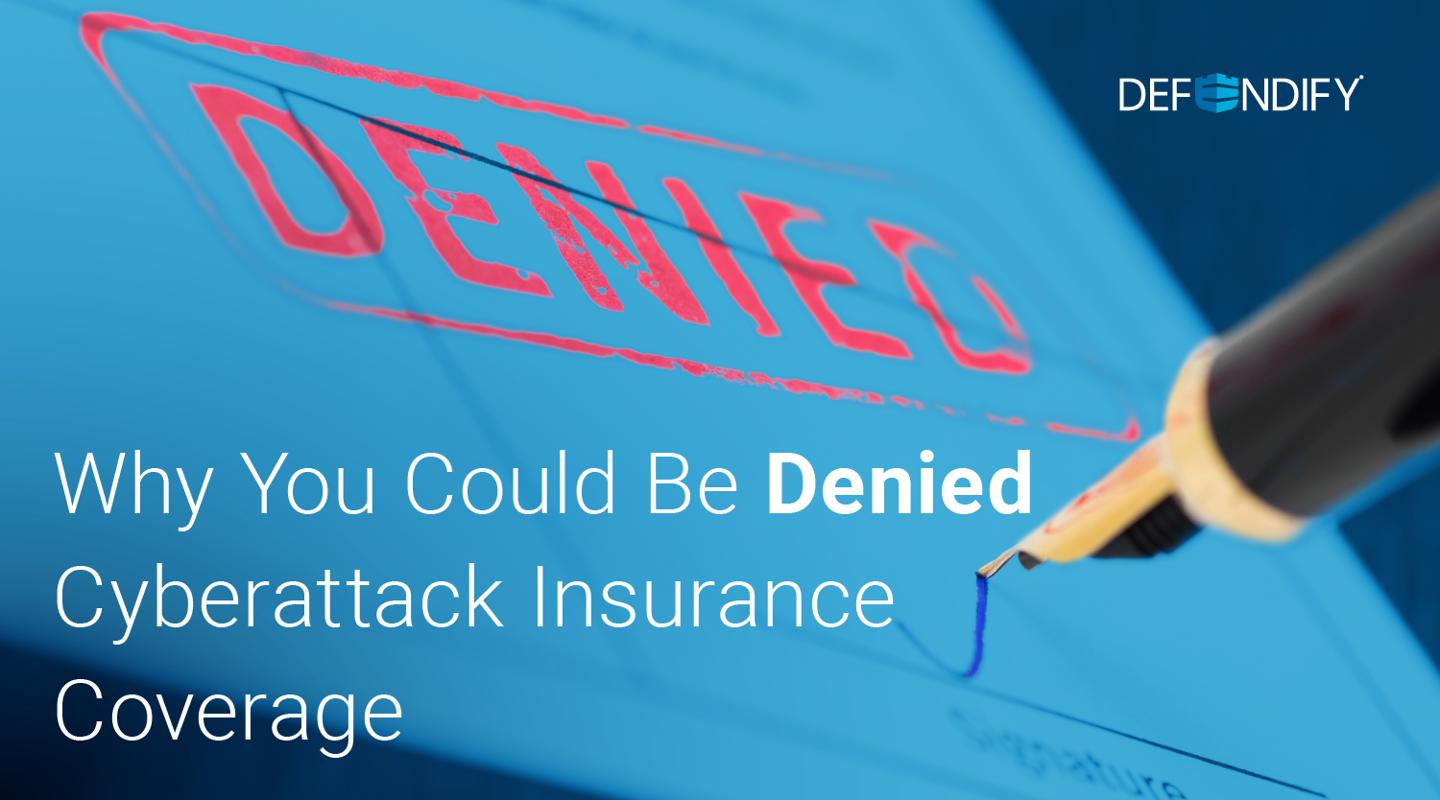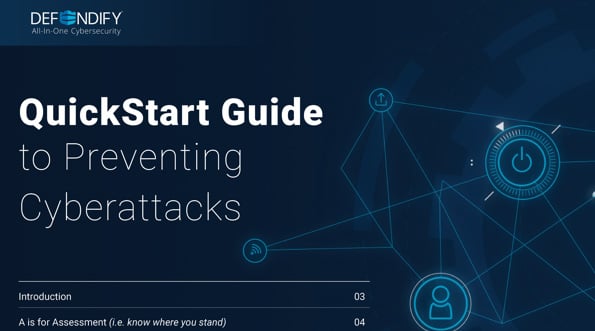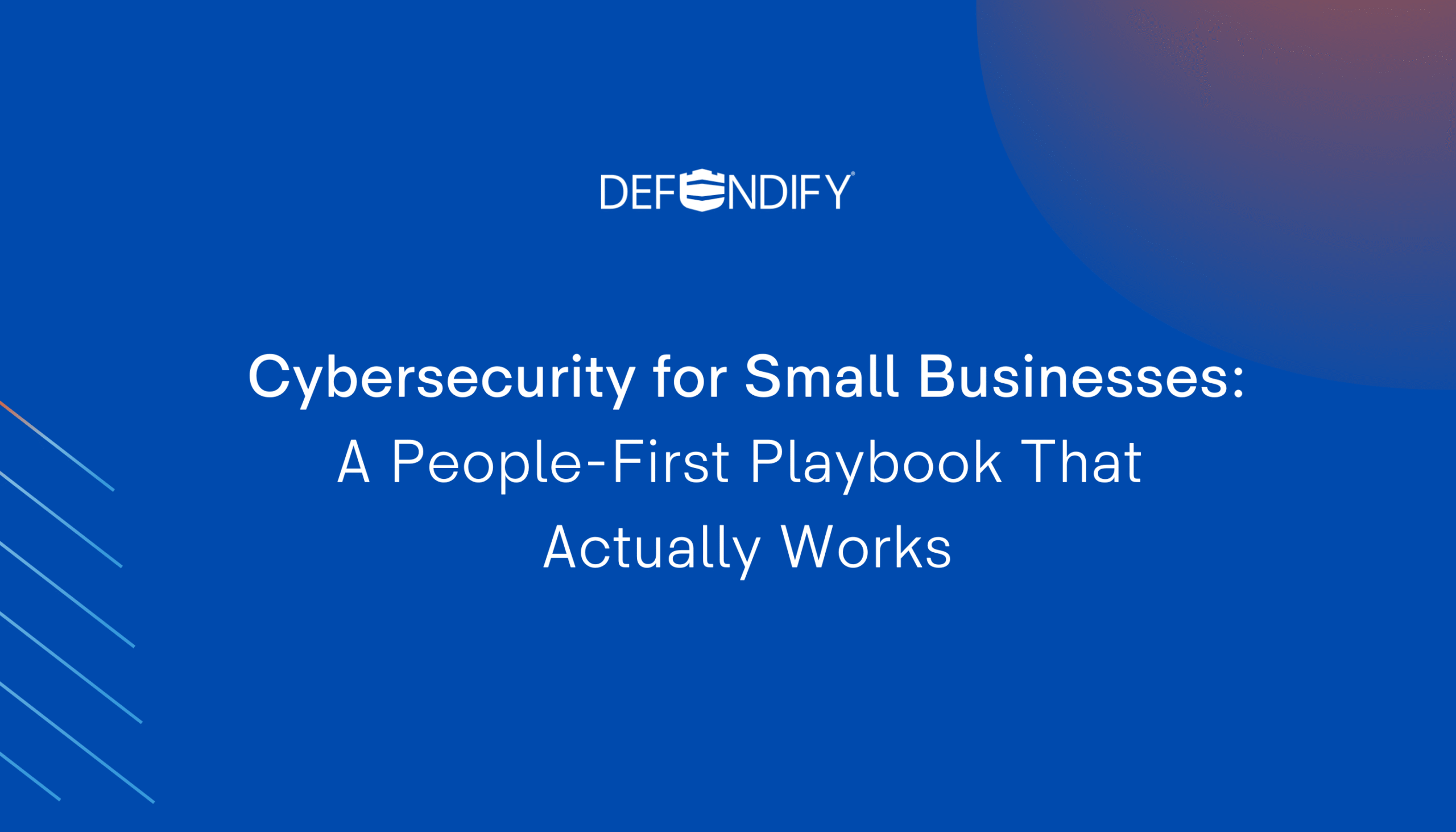Summary: Most cyber threats that hit small and midsize businesses (SMBs) aren’t exotic hacks—they’re simple phishing attacks, scams, and weak spots in daily habits. In this guide, built from a Defendify webinar with veteran technologist Heather Noggle and Defendify’s own Customer Success Manager, Daryl Barton, we’ll show you how to build lasting cybersecurity habits, roll out effective cybersecurity training, and strengthen your security posture without slowing down your business.
Cybersecurity: Why People Are Still the First Line of Defense
When people hear “cybersecurity,” they often picture firewalls, complex code, or teams of elite hackers in hoodies. But 30-year technology veteran and founder of Codistac, Heather Noggle, takes a different view:
“It’s always been about making human life better and more practical, not about the fascination with the tech. Technology should serve people.”
That perspective matters because most cyberattacks succeed not by breaking code but by exploiting human error. Clicking phishing emails, reusing weak passwords, or connecting to public Wi-Fi without a VPN are all daily actions that open the door to cybercriminals.
The good news? Simple, repeatable security practices can turn your people into the first line of defense.
Phishing: The Everyday Threat SMBs Can Actually Reduce
According to Verizon’s 2024 Data Breach Investigations Report, phishing remains the number-one entry point for data breaches, driving a large percentage of successful attacks worldwide.
How to fight phishing in small businesses:
- Launch short, entertaining cybersecurity awareness training videos monthly, not once a year.
- Run phishing simulations that mimic real-world phishing attempts (invoice fraud, HR notifications).
- Provide a “Report Phish” button so employees can flag suspicious emails quickly.
- Recognize employees who report phishing scams—positive reinforcement builds culture.
Defendify CSM Daryl Barton explains why framing matters:
“We don’t just want to spring this on people. We start by asking: is the executive on board? Has the change been communicated? That’s where awareness succeeds.”
Cyber Threats Facing SMBs in 2025
The most common cyber threats we see among SMBs today include:
- Phishing attacks → email lures leading to credential theft or wire fraud.
- Malware and ransomware → infecting devices and holding company data hostage. The FBI’s IC3 Report noted ransomware caused over $50 billion in reported losses in the last five years.
- Social engineering attacks → attackers impersonating executives, vendors, or IT staff.
- Exploited vulnerabilities in unpatched software, SaaS apps, or exposed services.
- Misuse of personal devices in remote work setups, especially over public Wi-Fi (the FTC warns this remains a high-risk vector).
Each can disrupt operations, cause data loss, or expose sensitive information. But most can be prevented with foundational security measures.
Cybersecurity Training: Short, Practical, and Ongoing
Too many businesses treat cybersecurity training as an annual compliance exercise. Heather puts it bluntly:
“The goal is to change behavior, not check boxes.”
Effective cybersecurity awareness training should:
- Be short and relevant (5–10 minutes).
- Include phishing simulation tied to current threats.
- Cover basics like strong passwords, multi-factor authentication (MFA), and safe data handling.
- Explain why each action matters—link security practices to business outcomes.
Done well, training builds lasting cybersecurity habits that reduce risk far more than a once-a-year lecture.
Cybersecurity Awareness: Building a Security Culture
Culture matters. If leaders treat cybersecurity as “just IT’s job,” employees won’t take it seriously. But when leaders model security practices, staff follow.
Heather recommends creating initiatives that embed cybersecurity awareness into daily work:
- Recruit security advocates across departments to answer questions.
- Add simple reminders during onboarding, all-hands, or team huddles.
- Use analogies people understand (Heather once compared skipping MFA to locking every door on your car but leaving the driver’s door wide open).
A healthy security culture means staff don’t hesitate to report suspicious activity or flag potential threats.
Cybersecurity Habits That Reduce Risk Immediately
Here are five cybersecurity habits that cut risk dramatically:
- Enable multi-factor authentication (MFA) on email, payroll, SaaS apps, and VPNs.
- Use a password manager to enforce unique passwords and retire weak passwords.
- Keep endpoints updated with antivirus and patching to close known vulnerabilities.
- Separate personal and work profiles on personal devices; require VPN if accessing work systems from public Wi-Fi.
- Back up critical systems and test restores regularly to prevent downtime from ransomware or data loss.
Each habit is simple, but together they transform an organization’s security.
Phishing Attacks: Detect, Block, and Respond
A structured approach helps teams manage phishing attacks:
- Before: Train people, filter phishing emails, and add banner warnings.
- During: Quarantine devices showing suspicious activity, and reset access.
- After: Review what happened, share lessons learned, and improve defenses.
Automate what you can (automate isolation, alerting), but keep humans in the loop. As Heather notes, social engineering attacks evolve quickly—only trained eyes catch the nuance.
Remote Work: Security Beyond the Office
Remote and hybrid work introduced new security risks:
- Staff logging into public Wi-Fi at airports or coffee shops.
- Using unmanaged personal devices for work.
- Storing company data in unsanctioned cloud storage or social media tools.
Best practices for remote work security:
- Require VPN or modern Zero Trust Network Access (ZTNA) for all remote sessions.
- Enforce disk encryption, patching, and antivirus on all endpoints.
- Standardize security practices across remote staff—no exceptions for executives.
From Risk to Roadmap: A Practical 90-Day Plan
Heather recommends pairing technology with risk management conversations. Here’s how a small business can start:
Days 1–30
- Publish plain-language policies (acceptable use, email, data security).
- Roll out MFA and a password manager.
- Start a simple asset inventory (devices, SaaS, cloud apps).
Days 31–60
- Launch phishing simulations and monthly cybersecurity awareness training.
- Patch and remediate top vulnerabilities.
- Draft a one-page incident response plan for security incidents.
Days 61–90
- Harden finance and HR workflows against phishing scams and social engineering attacks.
- Test restores to prove resilience against ransomware.
- Measure progress: phishing report rate, patch timelines, MFA adoption.
This roadmap is realistic for a lean security team or even an IT generalist wearing the hat.
FAQs
Q: Do we really need both strong passwords and MFA?
Yes. Strong passwords stop opportunistic cybercrime. MFA (or multi-factor authentication) stops many breaches even if a password leaks.
Q: Is dark-web monitoring enough?
No. It can alert you if credentials appear for sale, but without MFA, a VPN, and good cybersecurity habits, attackers can still succeed.
Q: How do we convince executives to complete training?
Frame it as protecting revenue, uptime, and reputation—not just IT. Tie cybersecurity awareness training to avoiding data breaches and protecting sensitive data.
Key Takeaways
- Cybersecurity is not just IT—it’s a shared responsibility.
- Phishing, social engineering, and ransomware remain the top cyber threats.
- Short, practical cybersecurity training builds lasting cybersecurity bhabits.
- SMBs can strengthen security posture with a 90-day plan: MFA, password manager, phishing training, patching, and backups.
- Building a healthy security culture makes prevention and response far more effective.
Want a Lightweight Cybersecurity Assessment?
If you’re unsure of your organization’s security today, Defendify offers a free cybersecurity assessment. It shows where your security practices stand, where vulnerabilities exist, and what next steps can strengthen your defenses.
Protect and defend with multiple layers of cybersecurity
Defend your business with All-In-One Cybersecurity®.
Explore layered
security
Learn more about Defendify’s three key layers and All-In-One Cybersecurity®.
How can we help?
Schedule time to talk to a cybersecurity expert to discuss your needs.
See how it works
See how Defendify’s platform, modules, and expertise work to improve security posture.
